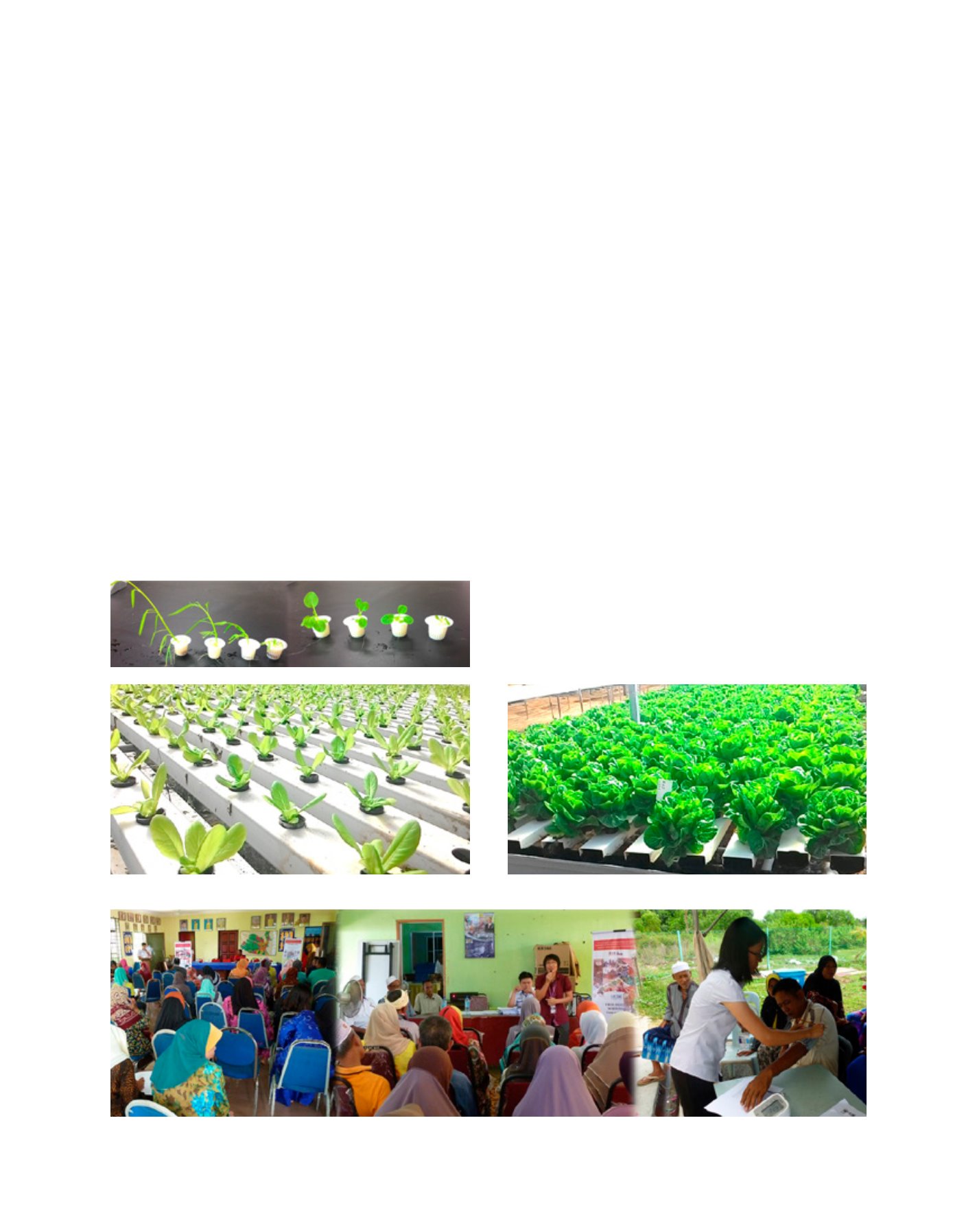

[
] 119
A B
et ter
W
or ld
The results showed that the metal ions, which are also
essential micronutrients of these plants, were found to acti-
vate plant growth at low concentrations of 0.005 to 0.05 mM.
However, they would significantly inhibit the elongation of
roots and shoots of the crop models, beyond their specific
threshold limits. Further tests have found that the presence
of lead, cadmium, chromium, copper, nickel and manga-
nese ions above concentrations of 0.55 mM, 0.025 mM, 0.20
mM, 0.25 mM, 0.40 mM, and 0.05 mM, respectively in the
irrigation water may result in profound physical growth
inhibition, reduction of photosynthetic pigments, proline
accumulation, and alterations of antioxidant enzymes guai-
acol peroxidase, ascorbate peroxidase, and catalase activities,
due to the metals-induced oxidative stress. Deeper analysis
has found that the accumulation of heavy metals was higher
in the metals-treated plants models, in the order of roots >
shoots > leaves. Toxicity tests using
in vitro
bioassay illus-
trated that these water pollutants may reduce the viability of
the human liver hepatocellular cells, and induce irreversible
damages on the deoxyribonucleic acid (DNA) in the cytotox-
icity evaluation and comet assay.
These analyses and onsite practical studies have given
support to the correlation between the presence of heavy
metal ions in irrigation water and their uptake by food crops,
causing yield reduction and growth impairment as well as
oxidative stress response, cytotoxicity and genotoxicity.
These effects could be exacerbated on a wider scale to affect
a larger population through the indiscriminate long term
application of wastewater in agricultural irrigation practice,
especially in the developing industrial zones.
In conjunction with pilot investigations and assessments, a
series of awareness programmes and knowledge dissemina-
tion sessions have been given to farmers and cultivators in a
number of states such as Tumpat, Kelantan; Segamat, Johor;
Alor Setar, Kedah; and Pekan, Pahang. The programmes
included questionnaire surveys and health risk assessments
by professional health experts, attracting the involvement of
more than 1,000 farmers throughout the country.
These investigations and surveys provide essential insight into
the degree of bioaccumulation of water pollutants, ion specia-
tion and the associated health implications of food crops grown
using wastewater irrigation. The programme has contributed
significantly to both the local and international communities
by proposing quality guidelines for the safe use of wastewater.
The present case study supports the integration of water
reuse into the core water governance frameworks, thus reduc-
ing the water footprint for food production. It also presents a
blueprint for food safety policies for the sustainable protec-
tion of human health and natural ecosystems. A large-scale
application of the emerging hydroponic technology, which
was also a key component of the present investigation, would
reduce the incidence of food security and food poisoning, and
aid the evolution of vertical farming and the wise manage-
ment of water resources, preservation of human welfare, and
the building of a sustainable future.
Left: Growth inhibition and distortion effects induced by heavy metals-
polluted irrigation water on water spinach and Chinese cabbage seedlings
Cabbage and lettuce cultivated in greenhouses to provide temperature control, reduce evaporative water loss, and control disease and pest infection
Awareness talks and health risk assessments conducted by professional health experts for the benefit of farmers, cultivators, and family members
Image: USM
Image: USM
Image: USM
Image: USM
















